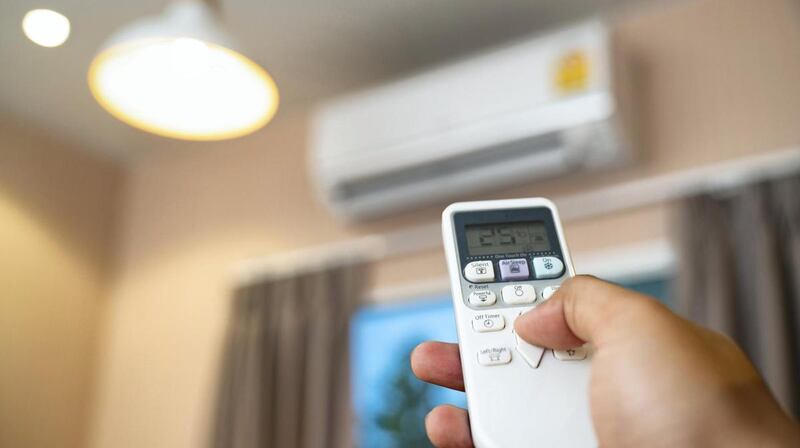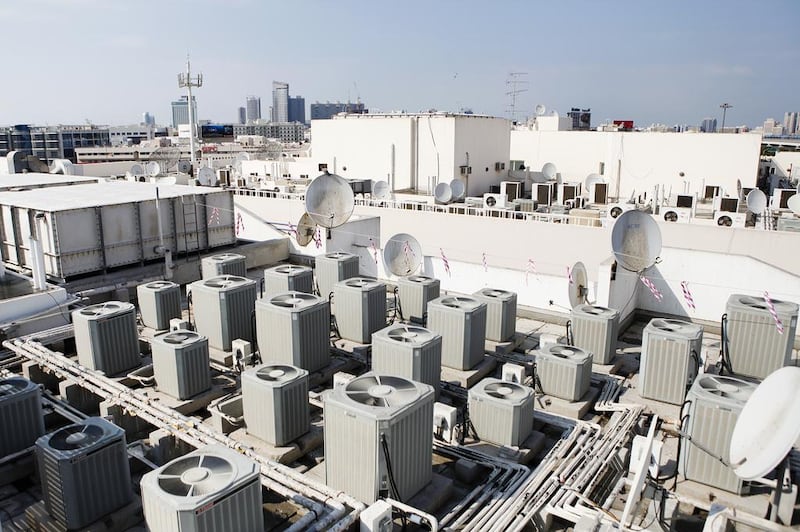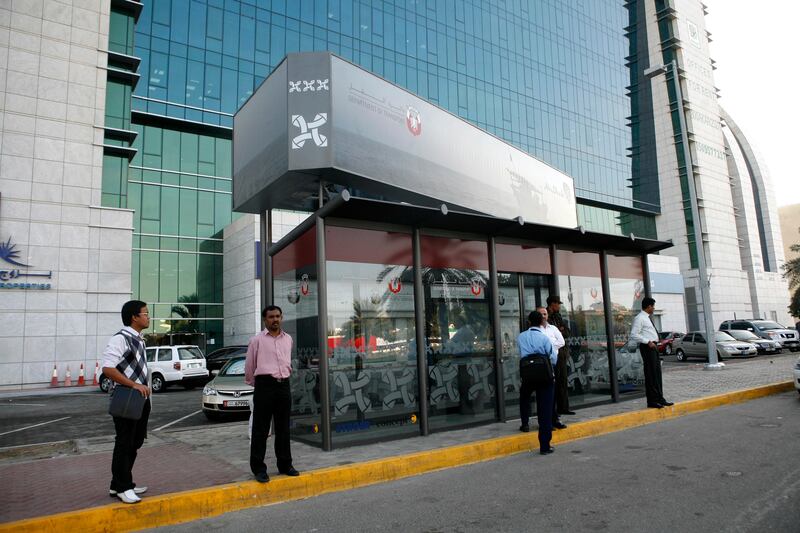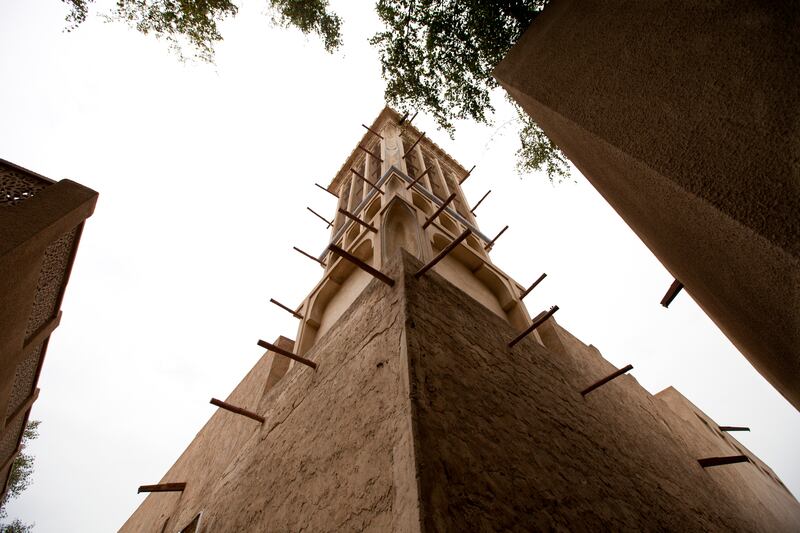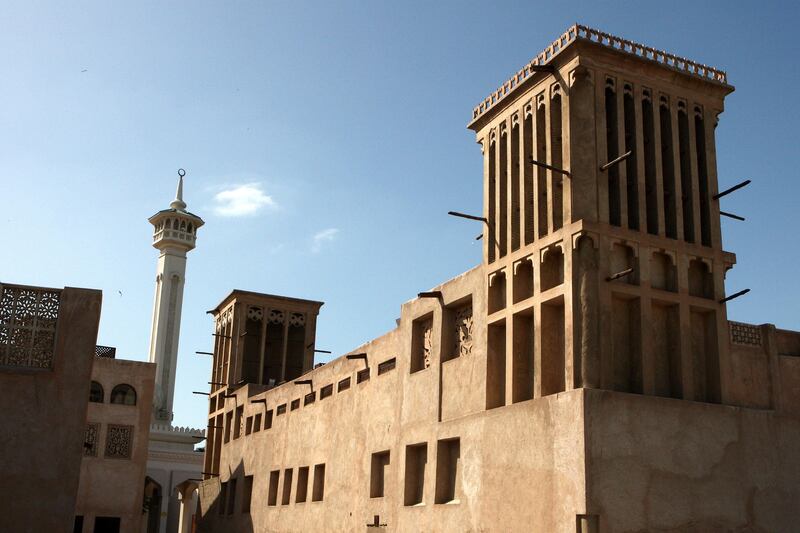Let’s be honest, unless you have to work outdoors, life in the summer months in the UAE and the Arabian Gulf region is not really that tough.
Temperatures may be well above 40ºC, but for most people air-conditioned homes, shopping malls, museums and cinemas, transport and even indoor theme parks take the edge off the heat in July and August.
The reality is that there is more danger from catching a chill in a cinema than going down with heat stroke.
Roll back the years, though, and it was a very different story.
For hundreds of years, the inhabitants of the Arabian Gulf and neighbouring countries had survived the scorching hot summers as best they could.
Some headed for the cool and less humid mountain areas, such as Al Ain, where the date palm groves and falaj irrigation channels provided some relief.

Others lived in houses equipped with a wind tower, a mechanism that pulled in air and reduced its temperature by a few crucial degrees.
When the first westerners began to arrive in numbers in the previous century, they took a very different view.
“Throughout Iraq, eye diseases are very common, infection being carried chiefly by flies and dust, and aggravated by the generally unsanitary conditions under which the people live,” a British military dispatch from 1920 noted.
“Epidemics of cholera, typhus and smallpox appear at intervals, and cases of bubonic plague have been known to occur.”
Effect on soldiers
The heat had an immediate effect on soldiers, most of them more accustomed to the rain and cold of a typical British summer.
Near the end of the First World War, the British and the Arab Allies were close to defeating the Ottoman Empire, but found the late summer temperatures as formidable a foes as the Turks.
“There were some ghastly losses from heat stroke among British troops when in September 1917 we launched an attack against the Turks in Southern Mesopotamia,” one officer said.
Another dispatch from the front records: “Our troops being held up in the open, began to suffer somewhat severely from heat stroke and heat exhaustion. The initiation of operations unfortunately coincided with a heat wave producing temperatures of over 120°F [48°C], and with a very hot wind blowing from the east.”
Records of the actual heat go back to the mid-19th century, thanks to the obsessive record-keeping by officials of the British Empire.

Details of the weather from the year 1881 show temperatures in the cities and towns on the Iranian shore of the Gulf.
In Borazjan, a few miles inland on the northern Gulf, they reached a high of 46.7°C in July, the peak heat. Shiraz, farther inland, recorded a high of 41°C in August 1881. For reference, Borazjan reached 48°C this week, and Shiraz 37°C.
Not all readings were as accurate. Writing in 1819, Claude Rich, a political agent in Turkish Arabia, made the improbable claim that rain was turning to steam as temperatures in Baghdad reached 188°F (87°C).
In 1880 the Second Afghan War ended with a decisive victory by British forces at the Battle of Kandahar in September.
The campaign leading up to the battle had involved a retreat to Kandahar by British and Indian troops after a mauling at the Battle of Maiwand in July,
For the relatives of the soldiers, newspaper reports of the terrible conditions in Afghanistan made harrowing reading.
One desperate mother was reduced to writing to Gen Lewis Pelly, a former commander in the region, but living in the UK at the time.
“As your words have weight and your influence has power with the powerful, I beseech you, Sir Lewis, to use it – ere it is too late [underlined],” Jane Yate wrote to Pelly on behalf of her “dear boy” serving in Afghanistan.
Mrs Yate urged the postponement of further action for at least two or three weeks “until the great heat is passed”, with the “extreme danger from cholera and heat stroke [with] troops retreating to India in the hottest month of the year”.
“God help them all”, she concluded, “as one so fearfully isolated as I am in this terrible war.”
Heat and exhaustion
The heat and dust continued to play havoc with military operations well into the 20th century.
In the 1950s, British troops were in action again, this time supporting the Sultan of Oman against a communist-led insurgency.
“Severe heat is having an effect on British troops and a number of cases of heat and exhaustion have occurred … very serious going for vehicles, heat been very difficult and vehicles and wireless have suffered breakdown from heat and terrain,” commanders urgently telegrammed in August 1957.
It was too late for one soldier in the Royal Electrical and Mechanical Engineers, with this dispatch sent a month earlier: “Greatly regret inform you Corporal R W Lloyd reme attached 13/18 hussars died today at 1045 hours of heat exhaustion stop I am arranging for him to be buried at muscar this afternoon.”
By the 1960s, detailed advice was provided to survive the heat.
“Fit for the heat: A practical guide for acquiring and maintaining fitness on arrival in hot countries” was a pamphlet given to servicemen supporting the creation of the UAE army in 1972.
“Particular stress is laid upon graduated exposure, both to the sun and to the tempo of work, unlimited intake of water, addition of extra salt to food especially in the first few weeks, and training in recognition and first aid treatment of heat illness (heat stroke and heat exhaustion),” were among the recommendations.
While the climate was “particularly trying in the summer months from July to October, when temperatures of up to 46°C and humidity readings of up to 90 per cent to 98 per cent are frequently recorded”, with precautions “heat need have neither horrors nor hazards provided troops are prepared by indoctrination and training”.
Away from the army, a stiff upper lip was still required for expatriates in Gulf countries.
Dressing for dinner was expected, but modified to adapt for the heat by the “Gulf Rig”, discarding the formal black jacket but retaining a freshly laundered shirt, bow tie and cummerbund – the latter preferably in red.
For “the ladies”, the advice was to wear cotton dresses, avoiding “nylon and synthetics”.
It was, at least, some improvement on the past. The authorities were so appalled by the death toll resulting from the Arabian climate that in 1810 they suspended new appointments to Muscat.
“After the experience of such repeated instances of mortality from any continuous sojourn at that station,” an East India Company official wrote. “We could not but hesitate with the appointment of a successor in the person of any British subject where conditions are too obviously unequal to withstand the baleful effect of that climate.”



